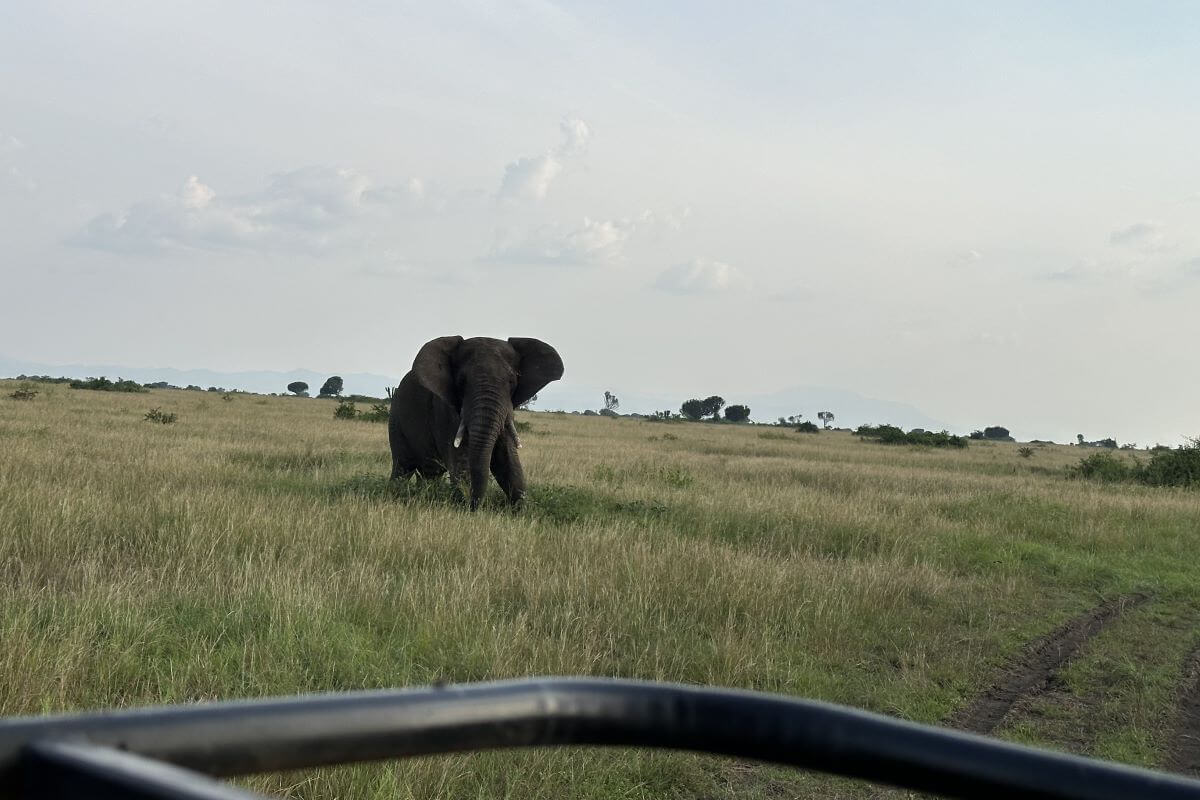The Ngorongoro Conservation Area is located in the Ngorongoro district. With an area of 8,292 square kilometers, the area is home to over 25,000 large animals and 550 bird species.
The entire Ngorongoro Conservation Area was part of Serengeti National Park before becoming a separate reserve in 1959. In 1979, it was designated as a UNESCO World Heritage Site. The Ngorongoro Conservation Area contains nine craters: Keramasi, Empakaai, Lolmalasin, Losirua, Olmoti, Ngorongoro, Oldean, Loroklukunya, Sadiman, and Makaruti.
The Ngorongoro Conservation Area’s main feature is the Ngorongoro Crater. This is the largest inactive, intact, and unfilled volcanic caldera in the world.
The Ngorongoro Conservation Area also protects the Oldupai/Olduvai Gorges in the plains. This is where the first known specimens of the human genus were discovered. The annual wildebeest migration traverses the plains of the Ngorongoro Conservation Area in search of food.
Birdlife can be seen among the various tree species during game drives as you descend into the Ngorongoro Crater. A wide range of animals can also be seen on the crater floor.
Depending on the season, flocks of pink flamingos can be seen around the shores of Lake Magadi. Hippos can be seen in the surrounding swamp. Most of the resident game lives in the open grasslands north of the Crater.
Walking safaris provide an up-close encounter with the natural environment. This activity is done on foot with a ranger guide.
Various wildlife species can also be seen while exploring the Ngorongoro conservation area. These walks can also be done around the Ngorongoro crater rim where wildlife such as elephants can be seen in the surrounding forest.
The Ngorongoro Conservation Area is home to over 550 bird species. These are visible on game drives and walking safaris.
The highland forest is home to the white-eyed slaty flycatcher and the Livingstone turaco. Flamingos can be seen around Lake Magadi depending on the season. Ostriches, starlings, black kites, grey-crowned cranes, African spoonbills, and other birds can also be seen in the area.
You can take a guided walk through the gorge or look for early human footprints in Laetoli. These footprints were discovered on a volcanic rock and date back more than 3 million years.
There is a small museum open to the public that houses discovered remains and artifacts for tourists to see. Realistic copies of the most significant discoveries can be viewed with ease, and guided tours of the sites can be taken with knowledgeable guides.
Cultural visits include interactions with Maasai people, visits to traditional Maasai homesteads, and watching traditional dance performances, among other activities.
Tourists may also choose to visit the Hadzabe tribe. The Hadzabe are primitive people who still hunt and gather. You can learn about their culture by taking a tour of their remote habitats.
The Ngorongoro Crater is a large volcanic caldera. It is about 20 kilometers across, 600 kilometers deep, 300 square kilometers in area, and 1,800 meters above sea level.
The crater was formed about three million years ago when a large volcano collapsed. The volcano was 4587 meters above sea level before it collapsed. Over 500 bird species and thousands of animals, including the Big 5, live in the crater.
Lake Magadi is a shallow soda lake located southwest of the Ngorongoro Conservation Area. It is often inhabited by thousands of flamingos, mostly lesser flamingos.
The lake shore is also a good place to see golden jackals, which hunt flamingos regularly. Other animals that may be seen include the Lion, Rhino, Hippo, Eland, and Grant’s Gazelle.
Olduvai Gorge is an archaeological site about 40 kilometers northwest of Ngorongoro Crater. The Olduvai Gorge is approximately 50 kilometers long and up to 90 meters deep. Dr. Louis Leakey and his wife, Mary Leakey made Olduvai famous through their excavations.
In the area, evidence of human evolution was discovered. Stone tools and fossils were among the discoveries made at the site. There is also a museum where visitors can can see the findings and learn about the history of human evolution.
The Ngorongoro Conservation Area is home to over 115 different mammal species. Lions, cheetahs, hyenas, leopards, jackals, serval cats, and endangered wild hunting dogs are among the carnivores found in the Ngorongoro Conservation Area.
The crater is home to elephants, elands, hartebeests, zebras, wildebeests, buffalos, waterbucks, warthogs, and kudus, as well as endangered rhinos. Hippos can be found in the crater’s permanent freshwater pools and swamps. Giraffes live in the vicinity of Lake Ndutu, where acacia trees flourish. The Conservation Area is home to over 550 bird species.
Some of these are residents and others are migratory. Thousands of lesser flamingos and other water birds frequent Lake Magadi. These birds can also be seen in the vicinity of Lake Ndutu and the Empakaai Crater Lake.
The forests of Ngorongoro are also full of birds, including turaco and hornbill species. Raptors such as the goshawk and harrier are common on the Conservation Area’s plains.

The dry season runs from December to March and June to September. It provides the best opportunities for wildlife viewing since the grasslands are shorter during this time.
Animals also congregate at the few remaining waterholes allowing tourists to see the majority of them in one location.
The Ngorongoro Conservation Area is about 185 kilometers from Arusha and about 230 kilometers from Kilimanjaro International Airport. By road, the area can be reached in about 3 hours from Arusha and about 5 hours from Kilimanjaro International Airport.
Visitors can also take a chartered flight from Arusha or Kilimanjaro International Airport to Lake Manyara Airstrip and then drive to Ngorongoro.
Visitors to the Ngorongoro Crater can choose from a variety of lodging options. You can stay in a budget, mid-range, or luxury lodge.
Staying at a hotel on the rim of the Crater or in nearby Karatu town is also an option. Camping is also allowed at designated areas such as the Ngorongoro crater rim, Ndutu, Lemala, and Empakaai crater rim.
